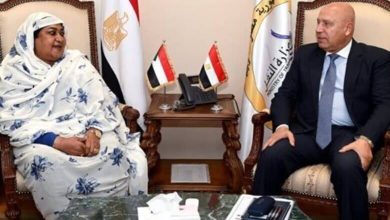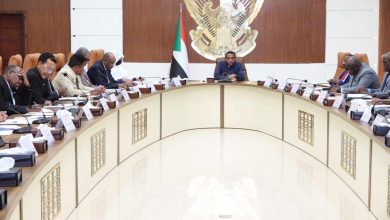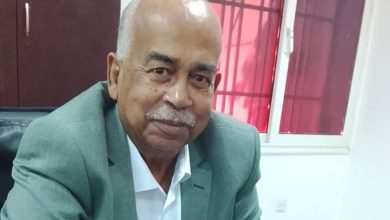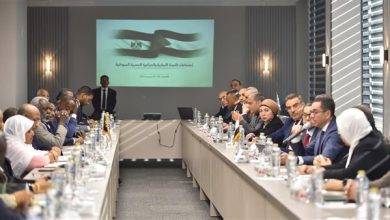Reconstructing Sudan…a National Vision
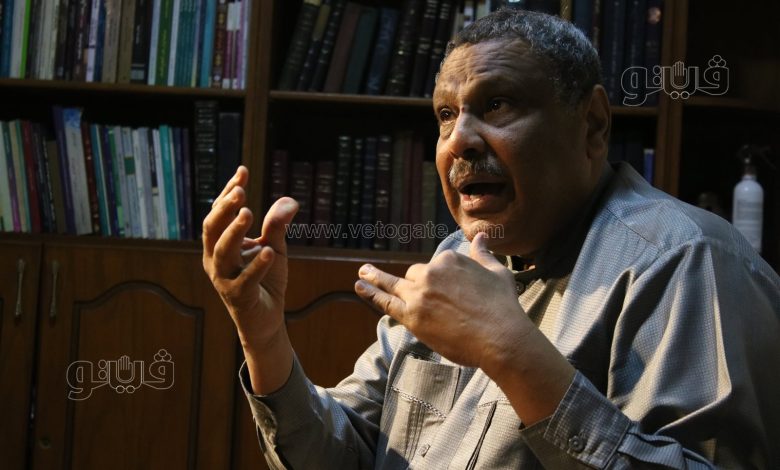
Cairo – Nahid Oshi
The Director General of the Sudanese-Egyptian Integration Center, Dr. Abdullah Mohamed Osman the arrival of about 200 ,000 and 300 ,000 persons arrived from Sudan to the Arab Republic of Egypt after the war, and 11,000 arrivals to Ethiopia and 160 ,000 to Chad, while 6 ,000 delegations to Central Africa and 30,000 arrivals to South Sudan, while the countries of Eritrea and Libya did not record any cases of entry after the devastation that broke out in On the 15th of April last year, he referred during his paper “Economic and Technical Aspects – A National Vision” that he presented within the activities of the Round Table for Reconstruction and Compensation.
He referred to the World Bank’s estimates of the growth of the Sudanese economy for the year 2023 at a rate of 0.5% and expected that the growth would be negative due to the conflicts and war that took place in Sudan and said as it came.
The World Bank WB estimates the gross product in 2022 at SDGs 16 ,000 billion equivalent to $32 billion, while the contributions of the agricultural sector were 28.9%.
And the industrial sector 14.4% and the services sector 56.7%
Macroeconomic losses:
Dr. Abdullah revealed the macroeconomic losses as a result of the war and said that the loss of public revenues amounted to $1,700 billion , while the loss of the gross domestic product amounted to $26.3 billion , indicating that the total public revenues and grants during the year 2022 were $1,411 billion, including taxes, representing 45% of the total revenues. General, administrative fees, oil revenues, and transit fees are 43%, in addition to foreign grants, which represent 12%.
the trade exchange :
He pointed to the volume of the daily losses of the war, as they amounted to one billion dollars in foreign grants, $6 million in public revenues, and $88 million in gross domestic product daily, indicating that the value of trade exchange during the year 2022 with the Republic of Egypt amounted to 1.4 billion dollars, with Eritrea, $ 5 million , and $ 85 million with Ethiopia, in addition to $1.2 billion with Libya and $8 million with South Sudan, where the volume of exports to Egypt amounted to $635.4 million and imports $670.7 million, while China’s imports amounted to $1725.9 million and exports reached $576.1 million.
Vehicle warfare:
He described the war in Sudan as a complex characterized by the intersection of external and internal geopolitical ambitions and interests based on employing retaliation , ambitions and national stupidity, addition to being an eradicative and settlement war aimed at erasing the institutions of Sudanese society.
He added that the war revealed the fragility of some components of Sudanese society and the exposure of the dangers of relying on imaginary relations of neighborliness and friendship, noting that Due to the necessity of developing a Sudanese national vision that goes beyond the limits of reconstruction to building a national project aimed at liberating the country’s energies, he said that the stages of reconstruction begin immediately after the war stops, focusing on providing emergency humanitarian services and supporting stability and a state of peace, and then the transitional period stage and aims to develop the capabilities of the local community to participate in rebuilding.
Economic and political reconstruction, then the stage of enhancing sustainability to ensure that there is no return to conflict
Economic recommendations:
The paper recommended the necessity of activating the Tax and Customs Office to collect real resources for the state, abolishing the subsidy for consumer goods item from the budget items, activating pro-poor spending items, resettling industries, encouraging investment in safe states, activating the economic partnership with China, using the Chinese yuan as a currency for trade exchange, and establishing a free zone for trade exchange between Egypt and Sudan, with the need for the government to put its hand on the gold produced in Sudan, so that it is part of the reserves of the Central Bank, while providing a fair price for producers.
